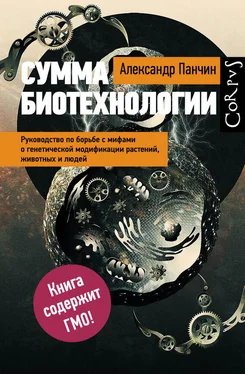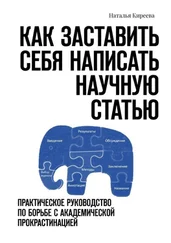343. Hart R., Norman R.J.: The longer-term health outcomes for children born as a result of IVF treatment. Part II – Mental health and development outcomes. Hum Reprod Update 2013, 19(3):244–50.
344. Brinton L.A. et al.: In vitro fertilization and risk of breast and gynecologic cancers: a retrospective cohort study within the Israeli Maccabi Healthcare Services. Fertil Steril 2013, 99(5):1189–96.
345. Reigstad M.M. et al.: Risk of breast cancer following fertili ty treatment – a registry based cohort study of parous women in Norway. Int J Cancer 2015, 136(5):1140–8.
346. Fan H.C. et al.: Noninvasive diagnosis of fetal aneuploidy by shotgun sequencing DNA from maternal blood. Proc Natl Acad Science USA 2008, 105(42):16266–71.
347. Schneider A. et al.: Population-based Tay-Sachs screening among Ashkenazi Jewish young adults in the 21st century: Hexosaminidase A enzyme assay is essential for accurate testing. Am J Med Genet A 2009, 149A(11):2444–7.
348. Cao A. et al.: Control of beta-thalassaemia by carrier screening, genetic counselling and prenatal diagnosis: the Sardinian experience. Ciba Found Symp 1996, 197:137–51; discussion 51–5.
349. White G. et al.: Clinical evaluation of recombinant factor IX. Semin Hematol 1998, 35(2 Suppl 2):33–8.
350. Sands M.S.: AAV-mediated liver-directed gene therapy. Methods Mol Biol 2011, 807:141–57.
351. Nathwani A.C. et al.: Long-term safety and efficacy of factor IX gene therapy in hemophilia B. N Engl J Med 2014, 371(21):1994–2004.
352. Cavazzana-Calvo M. et al.: Gene therapy of human severe combined immunodeficiency (SCID) – X1 disease. Science 2000, 288(5466):669–72.
353. Hacein-Bey-Abina S. et al.: A modified gamma-retrovirus vector for X-linked severe combined immunodeficiency. N Engl J Med 2014, 371(15):1407–17.
354. Ivics Z. et al.: Molecular reconstruction of Sleeping Beauty, a Tc1-like transposon from fish, and its transposition in human cells. Cell 1997, 91(4):501–10.
355. Collier L.S., Largaespada D.A.: Transposons for cancer gene discovery: Sleeping Beauty and beyond. Genome Biol 2007, 8 Suppl 1:S15.
356. Aronovich E.L. et al.: The Sleeping Beauty transposon system: a non-viral vector for gene therapy. Hum Mol Genet 2011, 20(R1):R14–20.
357. Schmitt T.M. et al.: T cell receptor gene therapy for cancer. Hum Gene Ther 2009, 20(11):1240–8.
358. Clay T.M. et al.: Efficient transfer of a tumor antigen-reactive TCR to human peripheral blood lymphocytes confers anti-tumor reactivity. J Immunol 1999, 163(1):507–13.
359. Roth J.A. et al.: p53 tumor suppressor gene therapy for cancer. Oncology (Williston Park) 1999, 13(10 Suppl 5):148–54.
360. Chen G.X. et al.: Clinical utility of recombinant adenoviral human p53 gene therapy: current perspectives. Onco Targets Ther 2014, 7:1901–9.
361. Collin S.P., Trezise A.E.: The origins of colour vision in vertebrates. Clin Exp Optom 2004, 87(4–5):217–23.
362. Jacobs G.H.: Evolution of colour vision in mammals. Philos Trans R Soc Lond B Biol Sci 2009, 364(1531):2957–67.
363. Panchin A.Y. et al.: Asymmetric and non-uniform evolution of recently duplicated human genes. Biol Direct 2010, 5:54.
364. Yokoyama S. et al.: Molecular basis of spectral tuning in the redand green-sensitive (M/LWS) pigments in vertebrates. Genetics 2008, 179(4):2037–43.
365. Deeb S. et al.: Structure-function relationships in human red/green color vision. Documenta Ophthalmologica Proceedings Series 1993, 56:13–7.
366. Jordan G. et al.: The dimensionality of color vision in carriers of anomalous trichromacy. J Vis 2010, 10(8):12.
367. Mancuso K. et al.: Gene therapy for red-green colour blindness in adult primates. Nature 2009, 461(7265):784–7.
368. Simonelli F. et al.: Gene therapy for Leber’s congenital amaurosis is safe and effective through 1.5 years after vector administration. Mol Ther 2010, 18(3):643–50.
369. Tomita H. et al.: Channelrhodopsin-2 gene transduced into retinal ganglion cells restores functional vision in genetically blind rats. Exp Eye Res 2010, 90(3):429–36.
370. Ramirez S. et al.: Creating a false memory in the hippocampus. Science 2013, 341(6144):387–91.
371. Bruegmann T. et al.: Optogenetic control of contractile function in skeletal muscle. Nat Commun 2015, 6:7153.
372. Samson M. et al.: Resistance to HIV-1 infection in caucasian individuals bearing mutant alleles of the CCR-5 chemokine receptor gene. Nature 1996, 382(6593):722–5.
373. Dean M. et al.: Genetic restriction of HIV-1 infection and progression to AIDS by a deletion allele of the CKR5 structural gene. Hemophilia Growth and Development Study, Multicenter AIDS Cohort Study, Multicenter Hemophilia Cohort Study, San Francisco City Cohort, ALIVE Study. Science 1996, 273(5283):1856–62.
374. Hutter G. et al.: Long-term control of HIV by CCR5 Delta32/Delta32 stem-cell transplantation. N Engl J Med 2009, 360(7):692–8.
375. Allers K. et al.: Evidence for the cure of HIV infection by CCR5Delta32/Delta32 stem cell transplantation. Blood 2011, 117(10):2791–9.
376. Tebas P. et al.: Gene editing of CCR5 in autologous CD4 T cells of persons infected with HIV. N Engl J Med 2014, 370(10):901–10.
377. Ebina H. et al.: Harnessing the CRISPR/Cas9 system to disrupt latent HIV-1 provirus. Sci Rep 2013, 3:2510.
378. O’Connell M.R. et al.: Programmable RNA recognition and cleavage by CRISPR/Cas9. Nature 2014, 516(7530):263–6.
379. Foster H. et al.: Genetic therapeutic approaches for Duchenne muscular dystrophy. Hum Gene Ther 2012, 23(7):676–87.
380. Yamamoto H. et al.: NCoR1 is a conserved physiological modulator of muscle mass and oxidative function. Cell 2011, 147(4):827–39.
381. Hedrick P.W.: Virgin birth, genetic variation and inbreeding. Biol Lett 2007, 3(6):715–6.
382. Davis G.K: Cyclical parthenogenesis and viviparity in aphids as evolutionary novelties. J Exp Zool B Mol Dev Evol 2012, 318(6):448–59.
383. Bulletti C. et al.: The artificial womb. Ann NY Acad Sci 2011, 1221:124–8.
384. Devlin B. et al.: The heritability of IQ. Nature 1997, 388(6641): 468–71.
385. Plomin R. et al.: Variability and stability in cognitive abilities are largely genetic later in life. Behav Genet 1994, 24(3):207–15.
386. Spitz E. et al.: Comparative diagnoses of twin zygosity by SSLP variant analysis, questionnaire, and dermatoglyphic analysis. Behav Genet 1996, 26(1):55–63.
387. Karaismailoglu S., Erdem A.: The effects of prenatal sex steroid hormones on sexual differentiation of the brain. J Turk Ger Gynecol Assoc 2013, 14(3):163–7.
388. Zhang S. et al.: Serotonin signaling in the brain of adult female mice is required for sexual preference. Proc Natl Acad Sci USA 2013, 110(24):9968–73.
389. Rogaev E.I. et al.: Genotype analysis identifies the cause of the “royal disease”. Science 2009, 326(5954):817.
390. Miller W. et al.: Sequencing the nuclear genome of the extinct woolly mammoth. Nature 2008, 456(7220):387–90.
391. Baker A.J. et al.: Genomic support for a moa-tinamou clade and adaptive morphological convergence in flightless ratites. Mol Biol Evol 2014, 31(7):1686–96.
392. Prufer K. et al.: The complete genome sequence of a Neanderthal from the Altai Mountains. Nature 2014, 505(7481):43–9.
393. Lynch V. et al.: Elephantid genomes reveal the molecular bases of Woolly Mammoth adaptations to the arctic. BioRxiv 2015.
394. Chesne P. et al.: Cloned rabbits produced by nuclear transfer from adult somatic cells. Nat Biotechnol 2002, 20(4):366–9.
395. Campbell K.H. et al.: Sheep cloned by nuclear transfer from a cultured cell line. Nature 1996, 380(6569):64–6.
396. Чайлахян Л. et al.: Электростимулируемое слияние клеток в клеточной инженерии. Биофизика 1987, 32(5):874–87.
Читать дальше
Конец ознакомительного отрывка
Купить книгу




![Александр Панчин - Гарвардский Некромант [litres]](/books/390749/aleksandr-panchin-garvardskij-nekromant-litres-thumb.webp)


![Александр Панчин - Апофения [litres]](/books/435337/aleksandr-panchin-apofeniya-litres-thumb.webp)




